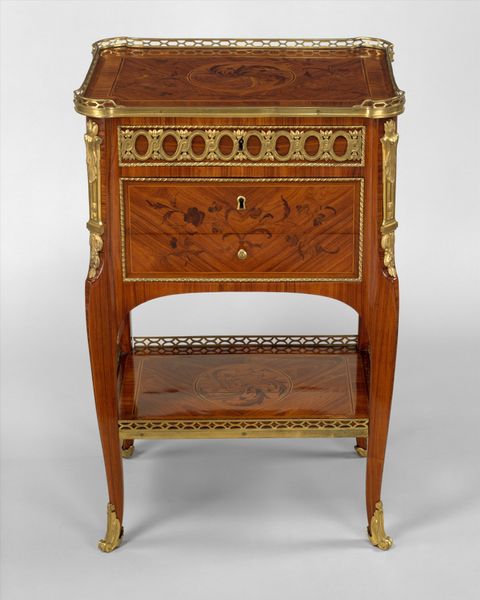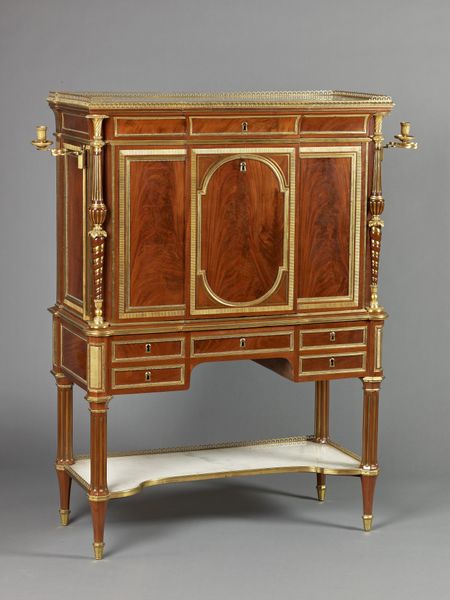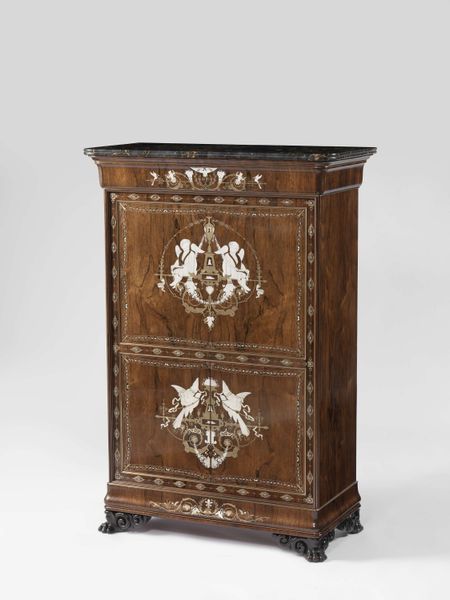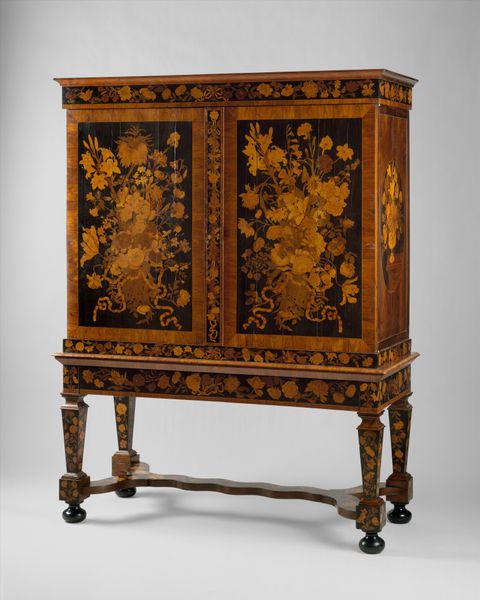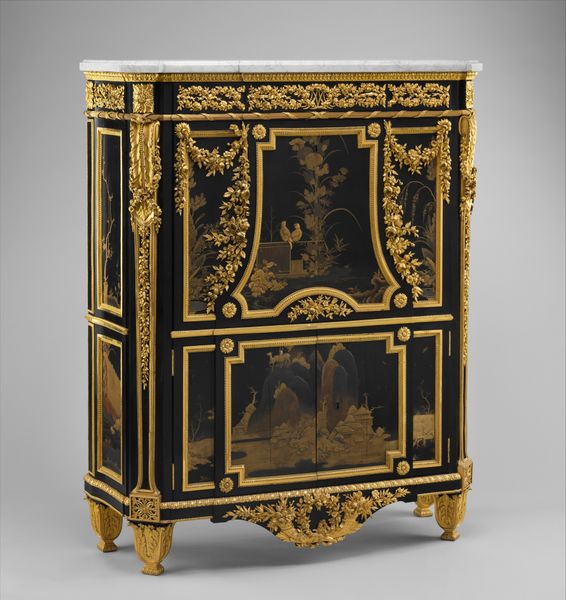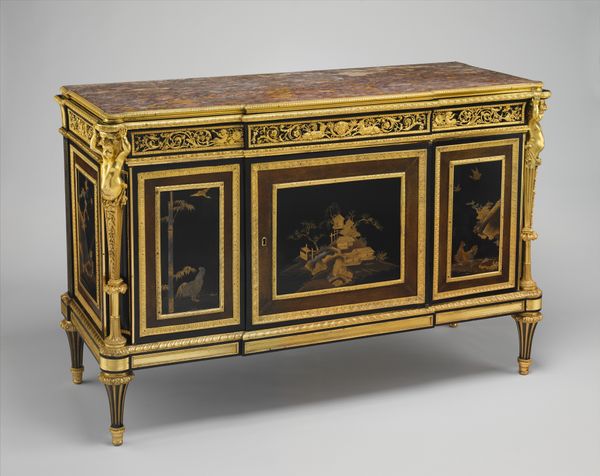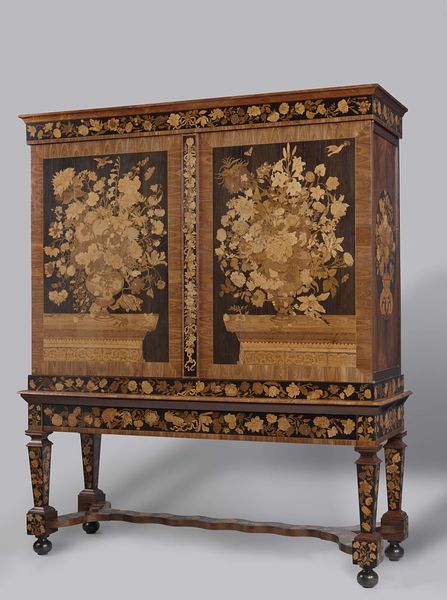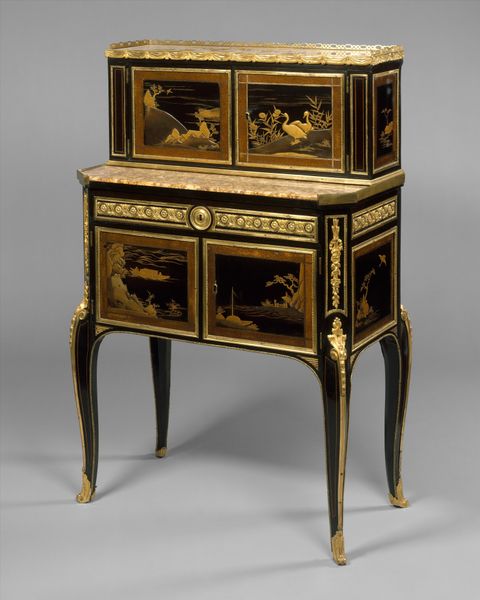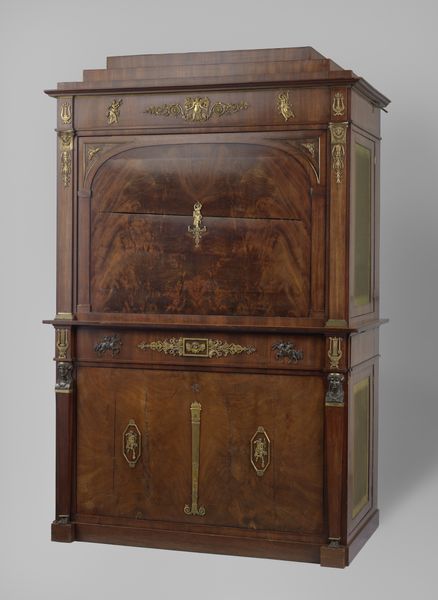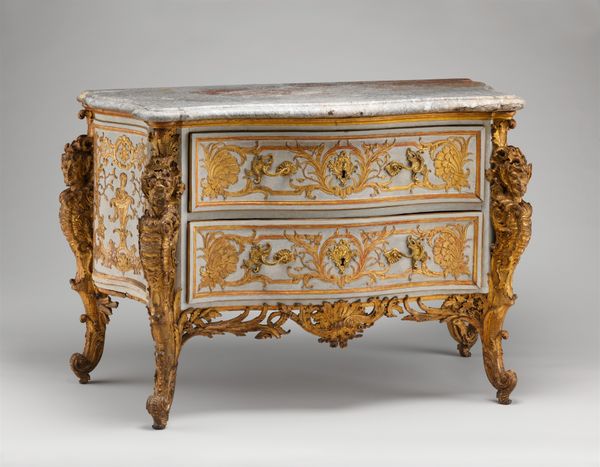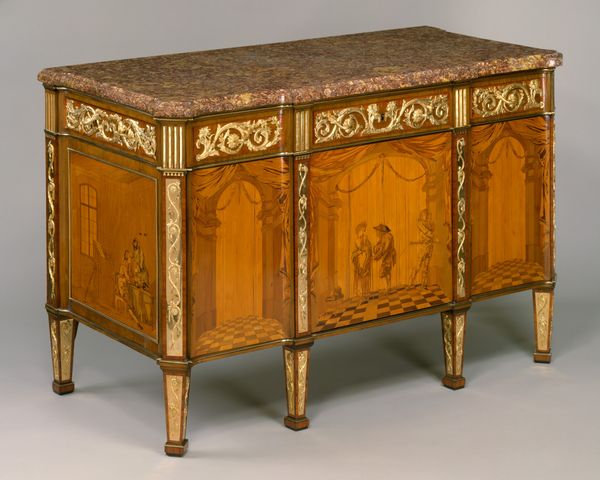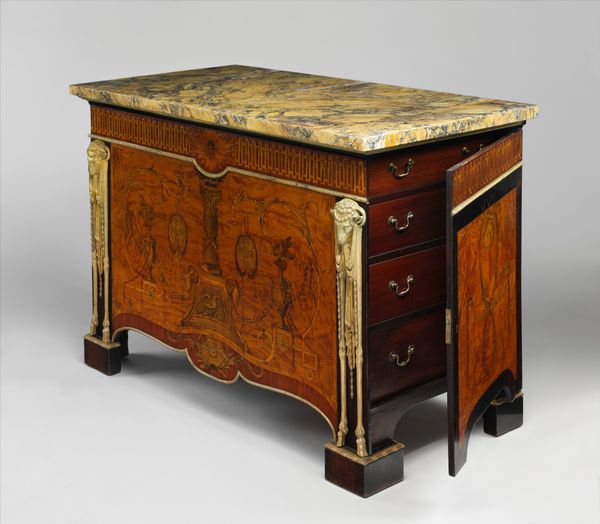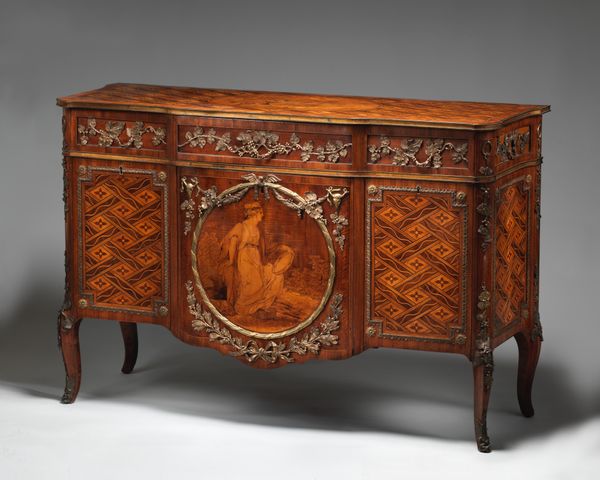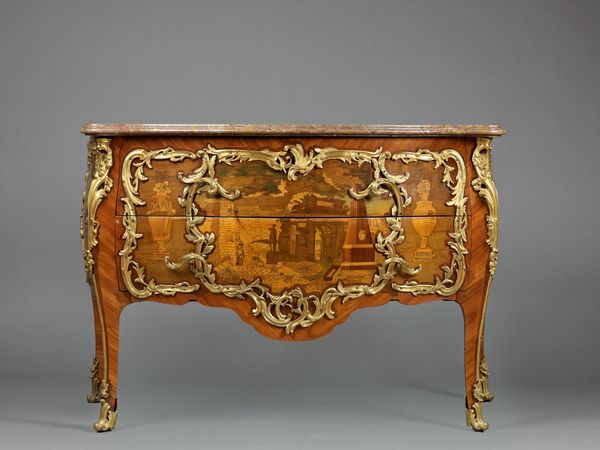
Drop-front secretary (secrétaire à abattant or secrétaire en armoire) 1786 - 1787
0:00
0:00
Dimensions: H. 63-1/2 x W. 32 x D. 15 in. (161.3 x 81.3 x 38.1 cm)
Copyright: Public Domain
Editor: Here we have Guillaume Benneman’s "Drop-front secretary," crafted around 1786-1787. It’s an ornate wooden cabinet, currently held at The Met. All that gilded detailing gives me such a strong impression of wealth and status. What kind of cultural meanings do you see reflected in the symbolism and design? Curator: Indeed. The opulence speaks volumes. Consider the use of gilt bronze – it’s not just decorative; it’s a statement of power, evoking classical forms and the very image of emperors and gods. How do you see these visual elements speaking to the era’s power structures and societal values? Editor: So it's not merely decorative, but designed to project influence. Are the classical figures playing a specific role here, like guarding knowledge or inspiring those who use the desk? Curator: Precisely. Figures such as those suggest erudition and virtue. They acted almost as guardians, or perhaps muses, inspiring the user toward intellectual pursuits and ethical conduct, mirroring ancient ideals. But isn't there a tension, considering its practical function? What kind of memory do everyday objects create, compared to sculptures displayed in public places? Editor: That's a great point - this piece lives intimately with people and is touched daily! Its value goes beyond display. That interplay between use and symbolic weight is pretty fascinating. Thanks for untangling that. Curator: And thank you for thinking it through with me! It reveals so much when we consider function, aesthetics, and cultural memory working together.
Comments
No comments
Be the first to comment and join the conversation on the ultimate creative platform.
